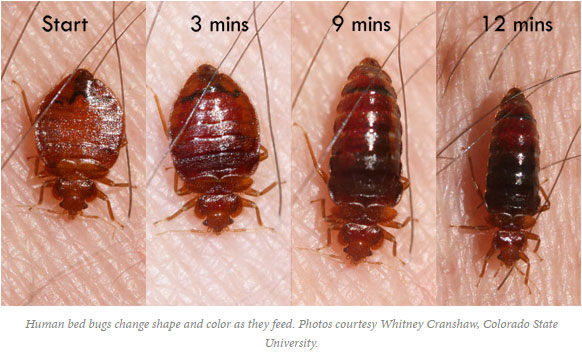Reliable A1 Bed Bug Treatment Houston - Do Away With Bed Vermin
Reliable A1 Bed Bug Treatment Houston - Do Away With Bed Vermin
Blog Article
Comprehending the Lifecycle of Pests for Targeted Control Strategies
Comprehending the lifecycle of bugs is a fundamental facet of efficient parasite management approaches. By understanding the different phases of growth that bugs undergo, a much more targeted and accurate method can be adopted to regulate their populaces. This expertise not just clarifies the susceptabilities within the parasite lifecycle but likewise paves the means for carrying out calculated actions that can disrupt their development and reproduction cycles. With a deeper understanding of just how parasites advance and prosper, tailored control methods can be designed to address details factors in their lifecycle, eventually resulting in more effective bug management outcomes.
Relevance of Recognizing Parasite Lifecycle
Recognizing the lifecycle of parasites is important for establishing reliable and targeted control approaches in pest monitoring. By comprehending the various phases a parasite goes with from egg to adult, bug control experts can determine susceptible factors in the lifecycle where treatment can be most successful.
In addition, recognizing the specific environmental conditions needed for each phase of the parasite's lifecycle can guide decisions on environment adjustment or exemption approaches to decrease and disrupt the lifecycle insect populations. This understanding allows pest administration experts to execute proactive procedures instead of depending exclusively on reactive therapies, leading to more long-term and sustainable pest control services. Inevitably, a complete understanding of parasite lifecycles encourages parasite control practitioners to tailor their strategies efficiently, reducing environmental influences and making best use of control end results.
Trick Phases in Bug Development
To efficiently carry out targeted control approaches in bug management, a crucial element depends on comprehensively determining and understanding the essential phases in insect advancement. Pest growth typically includes numerous vital stages that are crucial for their lifecycle and management. The initial stage is the egg phase, where pests lay eggs that later hatch out into larvae. Larvae after that progress right into pupae, a stage where they undergo metamorphosis prior to emerging as grown-up insects. Comprehending these stages is necessary as it helps in pinpointing weak spots in the lifecycle where control steps can be most reliable.

Susceptabilities in Insect Lifecycle
Throughout the numerous stages of an insect's lifecycle, distinct vulnerabilities arise that can be purposefully targeted for efficient control steps. One crucial vulnerability exists in the egg phase, where insects are often a lot more vulnerable to certain pesticides or biological control representatives because of their soft outer covering, making them simpler targets for treatment. Additionally, the nymph or larval phase presents vulnerabilities as insects undergo fast growth and growth, requiring high power intake that can be exploited by interrupting their food resources or presenting development inhibitors. Pupal phases, defined by stability and improvement, provide a window for targeted control via physical obstacles or particular treatments that prevent successful development. Finally, adult insects, while more durable due you can find out more to their reproductive ability, can still be prone during mating or egg-laying tasks, which can be interrupted via scent catches or sterilization methods. Understanding these susceptabilities in the pest lifecycle is important for establishing precise and efficient control approaches that properly handle parasite populaces while minimizing ecological effect.
Implementing Targeted Control Actions

Applying targeted control steps typically entails a multi-faceted method. This may consist of environment alteration to make the environment less hospitable to bugs, such as removing standing water for mosquito control or securing access points for rodents. Furthermore, biological control techniques can be utilized, where natural killers or pathogens are introduced to keep pest populations in check.
Chemical control, such as the careful application of chemicals, is an additional usual approach. It is vital to utilize these substances judiciously to minimize ecological influence and prospective injury to non-target varieties - A1 Bed Bug treatment houston. Integrated Bug Administration (IPM) methods that incorporate various control steps in a coordinated and lasting manner are often the most efficient in achieving long-term bug management objectives. By implementing targeted control actions based upon a detailed understanding of parasite lifecycles, parasite populations can be successfully regulated while minimizing dangers to human wellness and the environment.
Improved Bug Administration Practices

Additionally, the incorporation of organic control representatives, such as all-natural killers or pathogens of insects, can help in reducing reliance on chemical pesticides and advertise an extra balanced community. Implementing physical barriers and catches can additionally become part of improved bug management techniques, providing safe and targeted remedies for More Bonuses pest control. Additionally, making use of scents and other semiochemicals can interrupt pest breeding patterns and interaction, causing reduced parasite populations with time.
Final Thought
By identifying vital phases in bug development and vulnerabilities in their lifecycle, targeted control steps can be executed to lessen parasite populations. Enhanced insect management techniques can help decrease the dependence on broad-spectrum pesticides and promote even more eco friendly web and lasting insect control methods.
Comprehending the lifecycle of insects is crucial for creating effective and targeted control techniques in parasite administration. By comprehending the various stages a bug goes via from egg to adult, bug control professionals can identify vulnerable points in the lifecycle where treatment can be most effective. Ultimately, a complete understanding of insect lifecycles empowers pest control specialists to tailor their techniques successfully, making best use of and reducing environmental impacts control end results.
By implementing targeted control measures based on a comprehensive understanding of parasite lifecycles, parasite populations can be properly regulated while decreasing threats to human health and the atmosphere.
By identifying vital phases in insect advancement and susceptabilities in their lifecycle, targeted control actions can be executed to minimize insect populaces.
Report this page